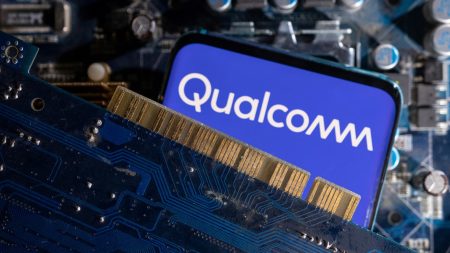Investing in semiconductors is seen as a smart way to capitalize on the artificial intelligence boom, according to VanEck’s CEO, Jan van Eck. Semiconductors are considered the heart of the AI trade, with the VanEck Semiconductor ETF (SMH) tracking 25 of the largest chipmakers in the country. SMH has seen a 21% increase in value this year, but has fallen nearly 6% this month, with top holdings like Nvidia experiencing fluctuations in their stock prices. Despite these short-term declines, van Eck remains optimistic, citing the high interest in AI chips as a potential driver for long-term growth.
Van Eck believes that the semiconductor industry has transitioned from a highly cyclical business with short product lives to being part of the growth trade. With more recurring revenue, these companies can maintain high profitabilities even during periods of short-term weakness. Mike Akins, co-founder of ETF Action, also sees potential opportunities for investors in the semiconductor sector. Akins highlights the limited competition faced by top chipmakers, which gives them control over pricing and could sustain the group’s performance. He advises investors to keep an eye on semiconductor fund flows as an indicator of future performance, suggesting that low flows could present buying opportunities, while high flows may signal a need to reduce investments.
Despite recent declines in semiconductor stocks such as Intel, AMD, and On Semiconductor, van Eck remains bullish on the industry’s prospects. Nvidia, one of the top holdings in the VanEck Semiconductor ETF, has experienced significant growth this year amid rising demand for its AI processors. While the stock has seen a recent decline, van Eck believes that the weakness is temporary and that the high demand for AI chips could lead to sustained returns for semiconductor companies. As the semiconductor industry continues to evolve and play a key role in the growth of artificial intelligence, investors may find opportunities to capitalize on this trend through investing in semiconductor ETFs like SMH.
Akins emphasizes the importance of paying attention to competition in the semiconductor space, noting that top chipmakers currently have a high moat and control over pricing. This lack of meaningful competition could support the performance of semiconductor stocks in the long term. By monitoring semiconductor fund flows, investors can gauge market sentiment and potentially identify buying or selling opportunities. Akins suggests that when flows are depressed, it may be a good time to buy, while extended flows could signal a need to pare back on investments. Overall, both van Eck and Akins see potential for growth in the semiconductor sector, driven by the increasing demand for AI chips and the evolving nature of the industry.
In conclusion, the semiconductor industry is seen as a key player in the artificial intelligence boom, with companies like Nvidia experiencing significant growth due to the high demand for AI processors. While recent market fluctuations have impacted semiconductor stocks, there is optimism about the industry’s long-term prospects. Investors may have opportunities to capitalize on this trend by investing in semiconductor ETFs like the VanEck Semiconductor ETF. By monitoring semiconductor fund flows and paying attention to competition in the industry, investors can make informed decisions about their investments in the semiconductor sector.Overall, investing in semiconductors may present an efficient way to play the artificial intelligence boom and capitalize on the growth potential of the industry.















